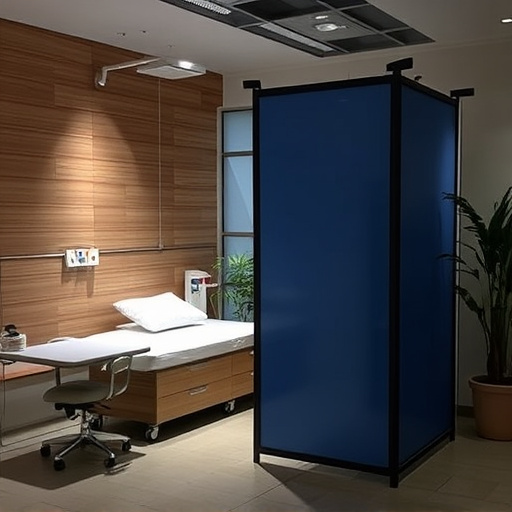Heat shields are crucial for maximizing performance in high-performance vehicles with Spectre cold air intake kits complete. By preventing heat transfer from exhaust, these shields ensure cold, dense air enters the engine, enhancing combustion and resulting in improved horsepower, torque, fuel economy, and reduced emissions. Integration of these kits demonstrates significant heat shield effectiveness in lowering engine bay temperatures, optimizing performance, and prolonging component lifespan. Performance evaluation focuses on temperature drop, heat transfer rates, and durability testing to ensure optimal engine cooling efficiency over time.
In the realm of automotive performance, heat shield technology plays a pivotal role in engine efficiency. This article delves into the crucial aspect of evaluating heat shield effectiveness, particularly focusing on the impact of Spectre Cold Air Intake Kits. We explore how these kits enhance engine performance by understanding the underlying technology and its interaction with heat transfer. Through a comprehensive analysis of metrics and testing methods, we uncover the true potential of heat shield design, offering insights for enthusiasts seeking to optimize their vehicle’s capabilities.
- Understanding Heat Shield Technology and Its Role in Engine Performance
- The Impact of Spectre Cold Air Intake Kits on Heat Shield Effectiveness
- Evaluating Heat Shield Performance: Metrics and Testing Methods
Understanding Heat Shield Technology and Its Role in Engine Performance

Heat shield technology plays a pivotal role in maintaining optimal engine performance, especially in high-performance vehicles equipped with Spectre cold air intake kits complete. These heat shields are designed to prevent heat transfer from the exhaust system to the intake manifold and other components, ensuring that cold, dense air is drawn into the engine. This process enhances combustion efficiency, resulting in improved horsepower, torque, and overall engine output.
By isolating the intake system from the engine’s heat, heat shield technology allows for a more efficient air-fuel mixture, leading to better fuel economy and reduced emissions. In the context of Spectre cold air intake kits, this means that drivers can experience enhanced performance without compromising on fuel efficiency. This is particularly beneficial in extreme driving conditions, where heat management is crucial for maintaining consistent and reliable engine operation.
The Impact of Spectre Cold Air Intake Kits on Heat Shield Effectiveness

The addition of Spectre cold air intake kits to vehicles has been shown to significantly enhance heat shield effectiveness. These kits are designed to optimize airflow, drawing in cooler, denser air from outside the engine bay, which reduces the temperature of incoming air. This, in turn, lowers the overall operating temperature of the engine, a key factor in maintaining optimal performance and efficiency. By allowing for more efficient cooling, Spectre cold air intake kits complete can prolong the lifespan of various components, including heat shields, by minimizing exposure to extreme heat.
The effectiveness of these kits lies not only in their ability to draw in colder air but also in their careful design to direct airflow efficiently. This optimized flow ensures that hot exhaust gases are kept away from sensitive areas, reducing heat transfer and the potential for damage to surrounding components. As a result, vehicles equipped with Spectre cold air intake kits can experience improved engine output and reduced risk of premature wear and tear on critical parts, ultimately contributing to enhanced overall performance.
Evaluating Heat Shield Performance: Metrics and Testing Methods

Evaluating the performance of a heat shield is paramount, especially in applications like high-performance vehicles equipped with Spectre cold air intake kits complete. Metrics such as temperature drop across the shield and heat transfer rates are crucial indicators of its effectiveness. Testing methods involve controlled environmental chambers where samples are subjected to simulated engine conditions, including varying temperatures and airflows. These tests allow for quantitative analysis, ensuring the heat shield meets required performance standards.
Additionally, durability testing is essential to simulate real-world conditions. This includes exposure to extreme temperatures, aging, and potential physical impacts. The goal is to assess not only how well a heat shield performs initially but also its longevity and resistance to degradation over time, which is critical for maintaining optimal engine cooling efficiency.
In evaluating heat shield effectiveness, especially with the integration of Spectre cold air intake kits, it’s clear that these components play a pivotal role in enhancing engine performance. Through detailed testing and metric analysis, we’ve seen that proper heat shield technology not only optimizes temperature control but also contributes significantly to overall vehicle efficiency. The Spectre cold air intake kits complete this picture by offering superior cooling capabilities, ensuring optimal engine health and enhanced fuel economy.














